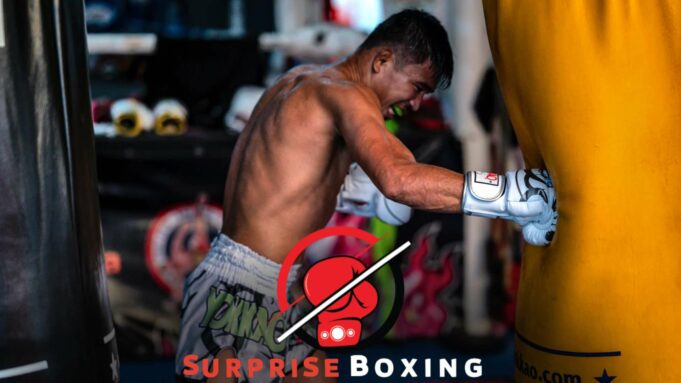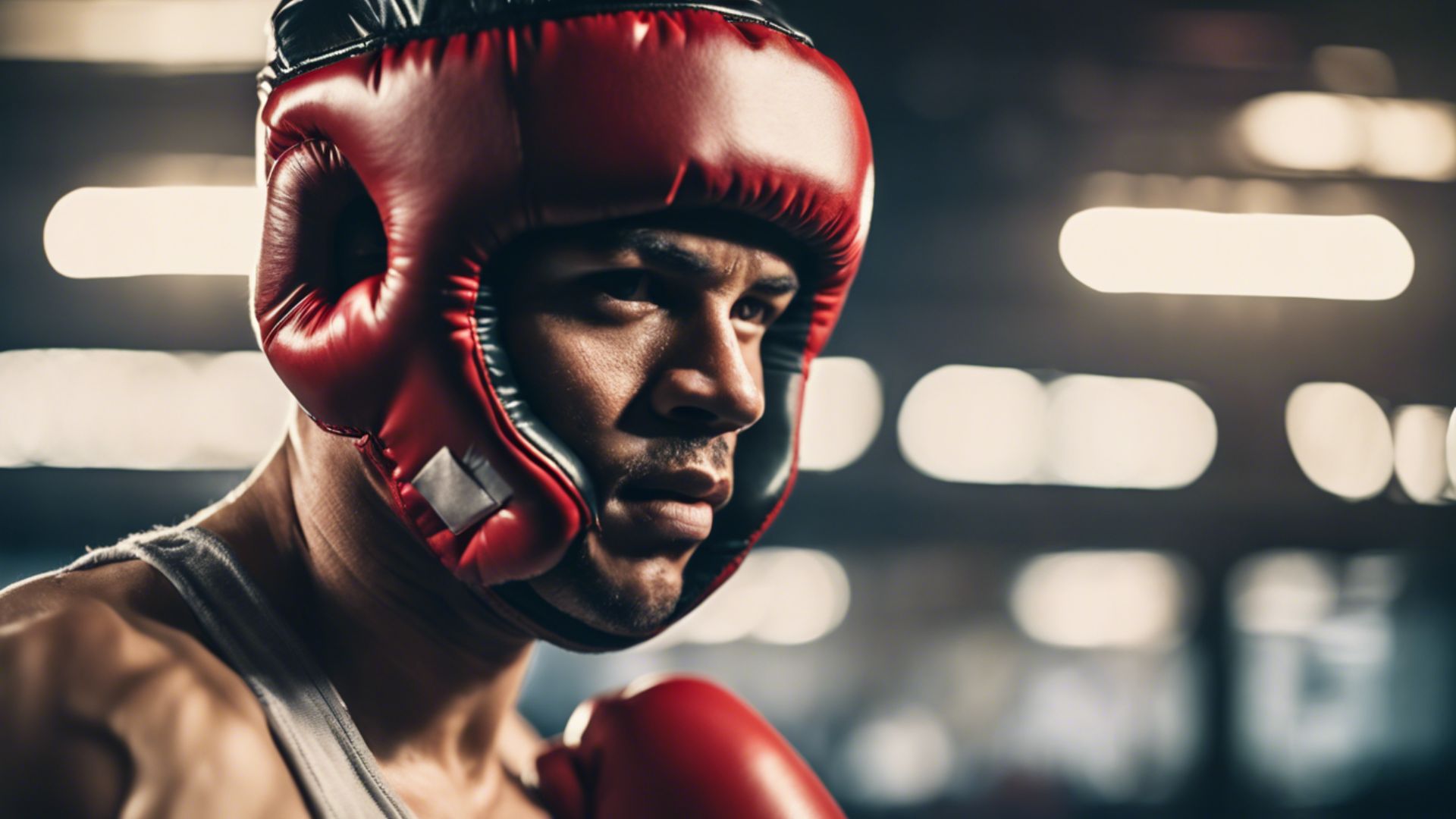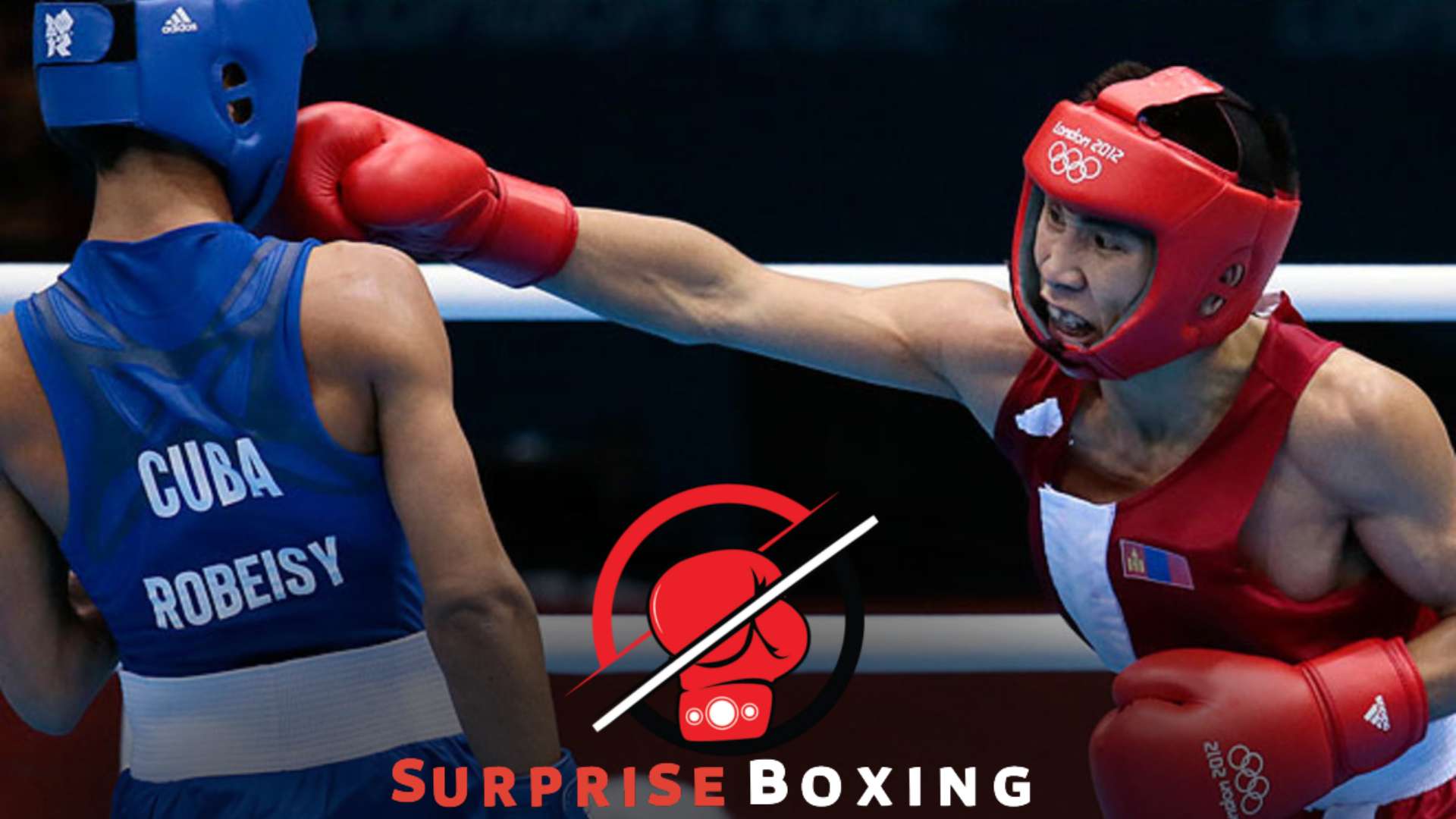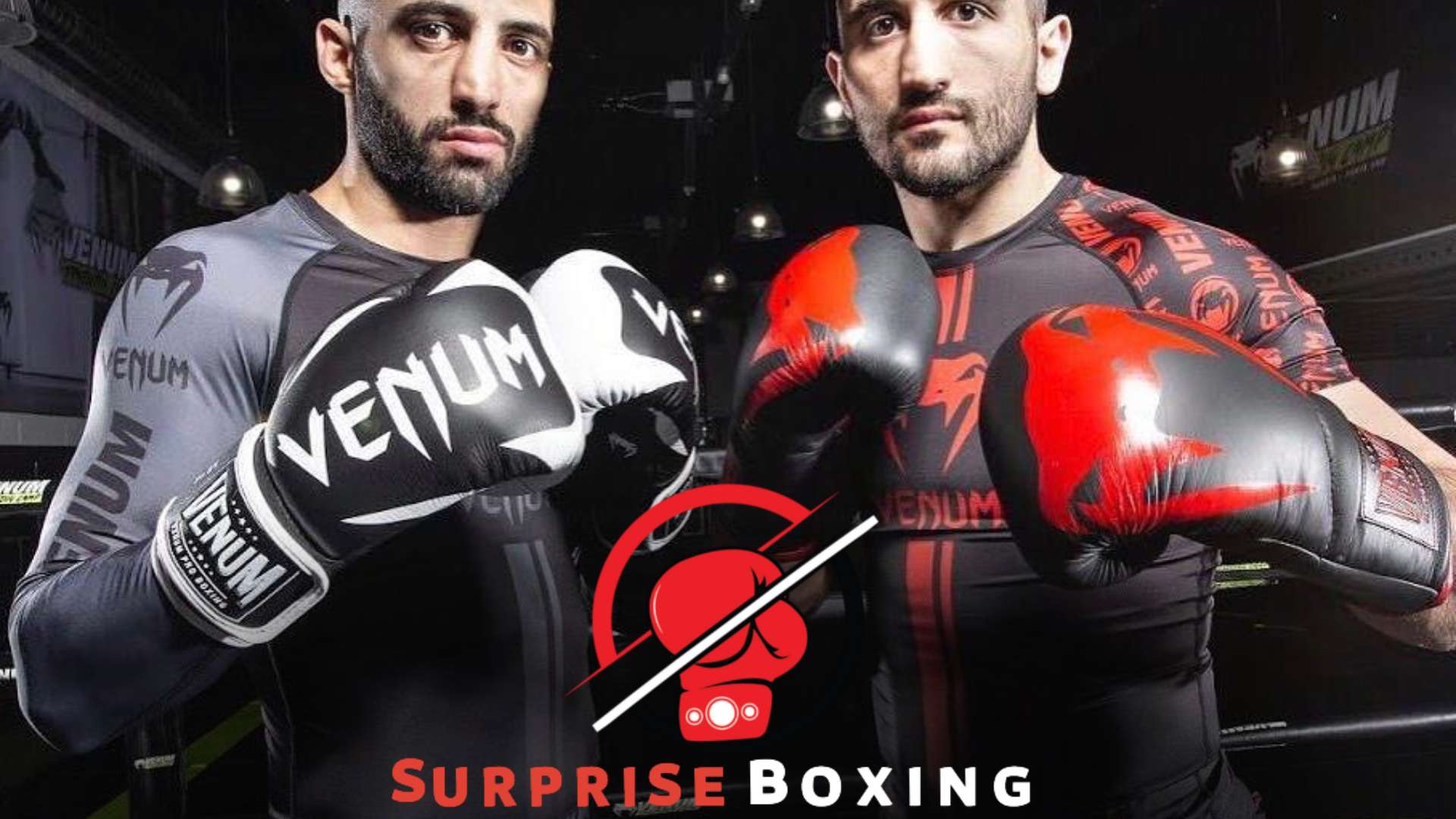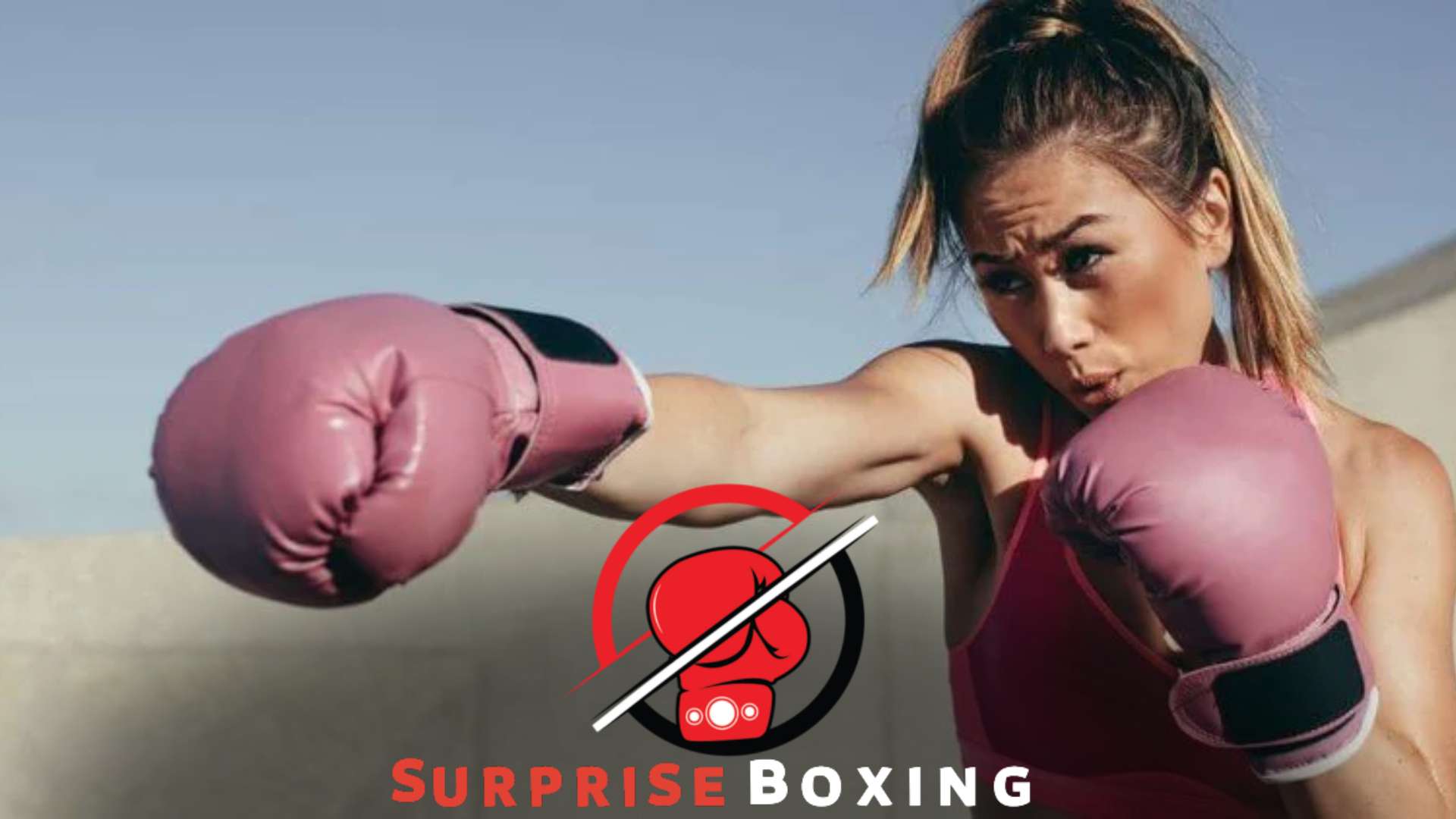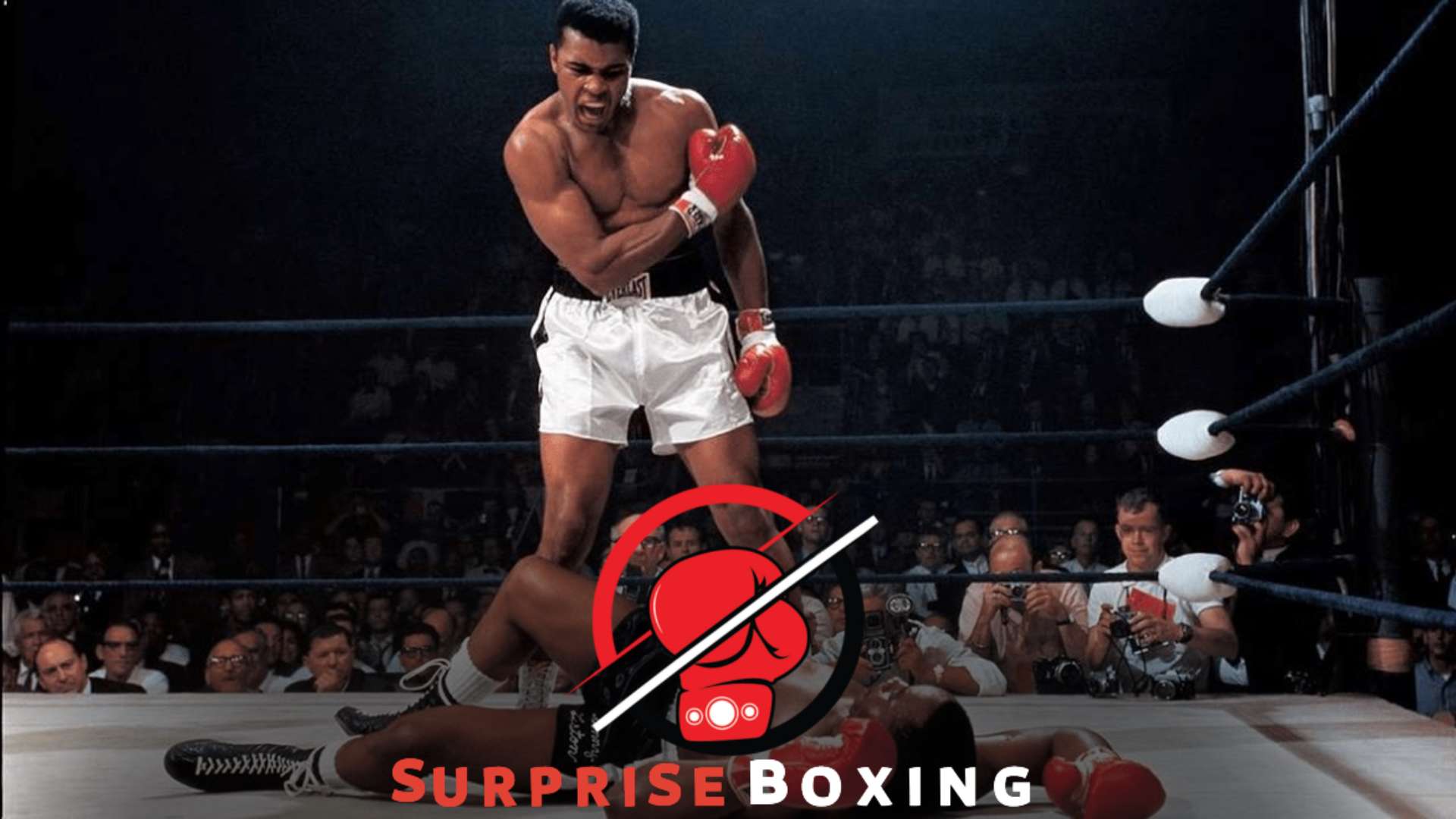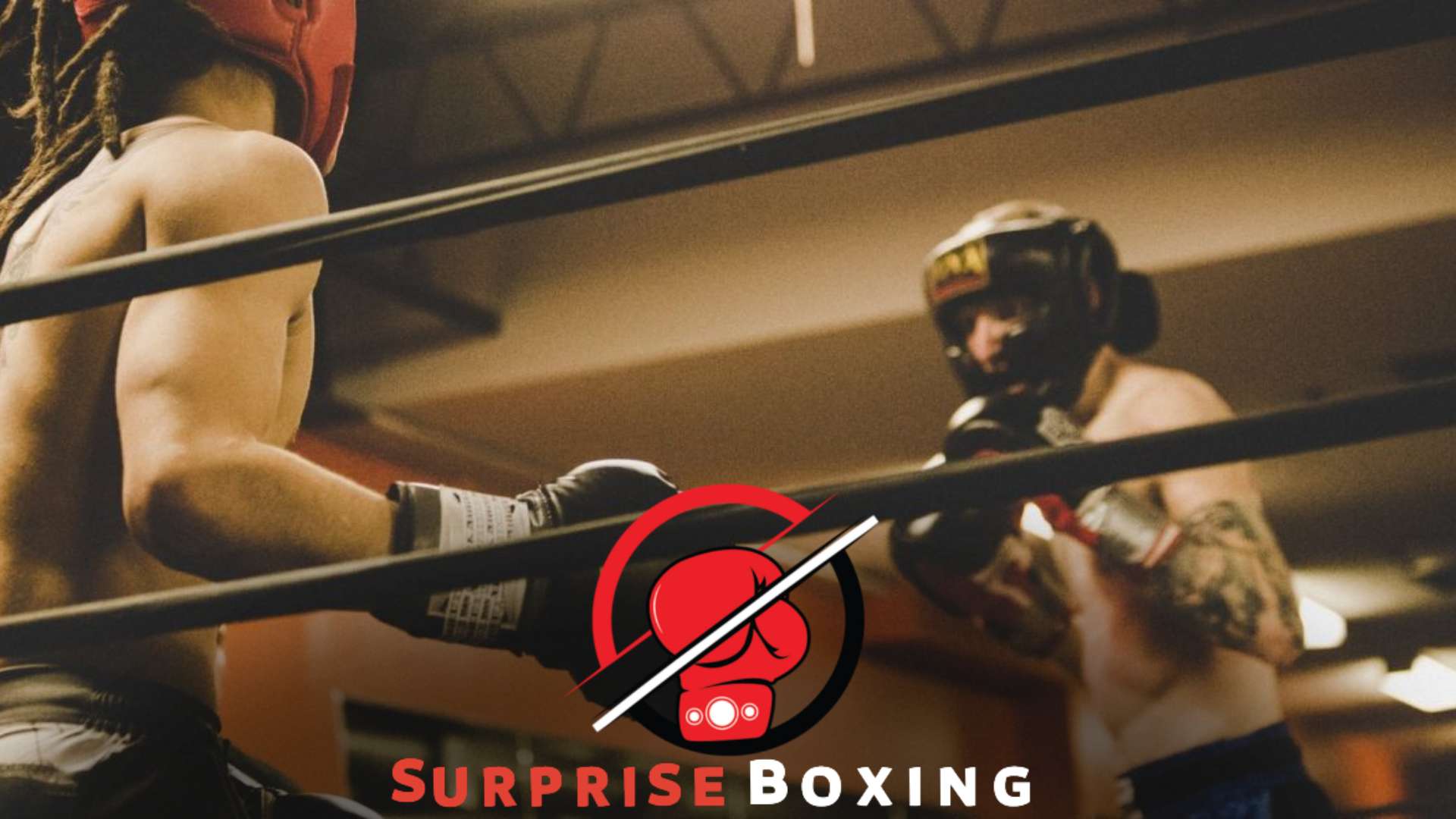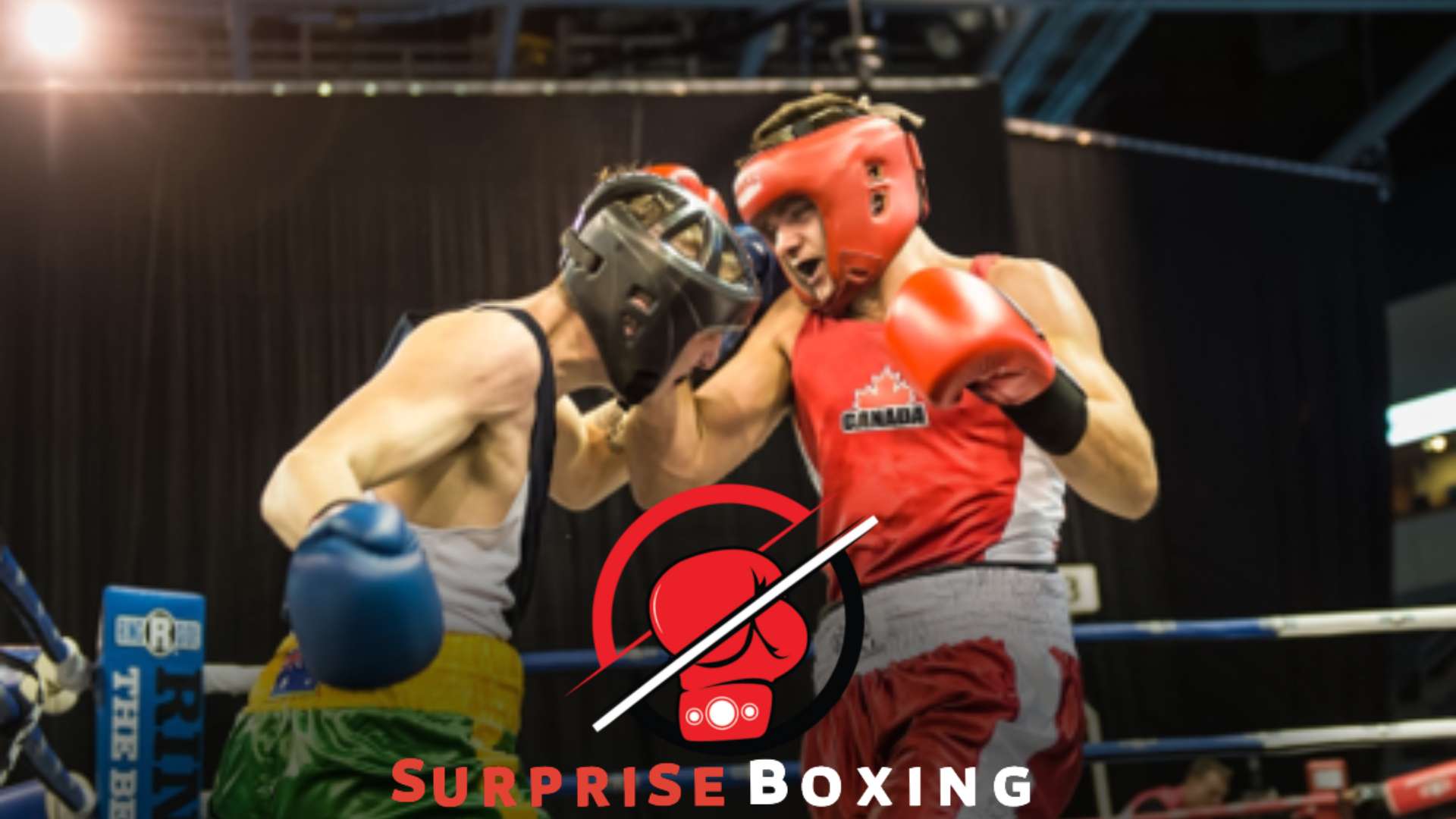To tie boxing headgear, follow these steps: secure the chin strap, adjust the straps on the sides, and ensure a snug fit to protect your head during training or matches. Tying boxing headgear is essential for safety and can prevent injuries.
Knowing how to tie and adjust your headgear correctly is crucial whether you are a beginner or a professional boxer. This guide will walk you through connecting boxing headgear to ensure a secure and comfortable fit.
So, let’s dive in and learn how to properly tie your headgear to maximize protection and performance in the ring.
Understanding Boxing Headgear: Types, Purpose, and How To Choose the Right Gear for Optimal Protection

Boxing headgear is essential for protecting your head during training or sparring sessions. Learn about the different types of headgear and how to choose the right one for optimal protection. Additionally, discover the proper technique for tying boxing headgear to ensure a secure fit and maximum safety.
Boxing headgear is a crucial equipment that protects the head and face during training and sparring sessions. It helps minimize the risk of injuries such as cuts, bruises, and concussions. However, choosing the proper boxing headgear can be overwhelming due to the many options available.
In this section, we will explore the different types of headgear and their purpose and provide helpful tips on selecting the ideal gear for optimal protection.
Types of Boxing Headgear
- Full-face headgear offers complete head, face, and chin coverage. It is highly recommended for beginners or individuals who prioritize maximum protection. Full-face headgear provides excellent shock absorption and helps prevent facial injuries.
- Open-face headgear: Open-face headgear, as the name suggests, leaves the face exposed, providing better visibility and breathability. It is commonly used by experienced boxers or individuals who prefer more mobility and less restriction while sparring or training.
- Cheek protectors: Some headgear options come with specialized cheek protectors designed to provide extra protection to the cheeks and reduce the risk of bruising or cuts. They are particularly beneficial for boxers who tend to get hit frequently in the cheek area.
- Nose bar headgear: Boxing headgear with a nose bar is designed to offer additional nasal protection, reducing the chances of a broken nose or other nose-related injuries. This type of headgear is favored by boxers who have previously experienced nose injuries or are prone to getting hit in the nose.
Purpose of Boxing Headgear
- Protection from impact: The primary function of boxing headgear is to protect the head, face, and critical areas of the effects of punches. It helps disperse and absorb the force of blows, reducing the risk of serious injuries.
- Preventing cuts and bruises: Boxing headgear with padding and protective layers helps minimize the likelihood of cuts, bruises, and abrasions. The barrier between the boxer’s skin and the opponent’s gloves reduces the direct impact on facial tissues.
- Shock absorption: Good-quality headgear is designed with ample padding to absorb and distribute the shock of punches, minimizing the risk of concussions and other head injuries. It helps cushion the impact and reduce the force exerted on the brain.
- Increasing confidence: Wearing properly fitted headgear can boost a boxer’s confidence during training and sparring sessions. The gear’s protection allows fighters to focus on their technique and skills, knowing they have a layer of defense.
How To Choose the Right Gear for Optimal Protection
- Proper fit: Ensure that the headgear fits snugly without being too tight or causing discomfort. It should cover the forehead, temples, cheeks, and chin adequately.
- Padding quality: Look for headgear with sufficient padding that offers excellent shock absorption. High-density foam or gel padding is often preferred for optimal protection.
- Material: Opt for headgear made from durable, breathable fabrics such as synthetic or high-quality genuine leather. These materials provide durability and comfort and allow proper airflow.
- Visibility: Consider the visibility provided by the headgear. Ensure that your peripheral vision isn’t significantly compromised, as it is crucial for awareness and defense.
- Ease of cleaning: Choose headgear that is easy to clean and maintain. Removable padding and machine-washable options can make keeping your gear fresh and hygienic more convenient.
Selecting the proper boxing headgear is paramount for optimal protection and performance. Evaluate materials’ type, purpose, fit, and quality to make an informed decision that meets your needs. Always prioritize safety to enjoy boxing while minimizing the risk of injuries.
Preparing To Tie the Boxing Headgear: Ensuring A Secure and Comfortable Fit for Optimal Safety and Performance
For a secure and comfortable fit, follow these simple steps to tie your boxing headgear correctly. Ensure optimal safety and performance in the ring.
Before stepping into the ring, it is crucial to properly tie your boxing headgear to guarantee a secure and comfortable fit. This enhances your safety and allows for optimal performance during training or competition.
Follow these steps to ensure a snug and reliable fit for your headgear:
The Right Size Matters
- Choose the correct size of headgear that fits your head snugly without causing discomfort.
- Consider the weight class you compete in, as different weights may require different levels of padding and protection.
- Always try on the headgear before purchasing to ensure you have selected the appropriate size.
Adjusting the Straps
- Start by adjusting the chin strap. Place the chin cup against your chin and pull the strap over your head, ensuring a snug fit that allows easy breathing.
- Check the velcro straps on the back of the headgear. These straps provide additional support and stability.
- Secure the velcro straps tightly but comfortably. Avoid making them too loose or tight, compromising comfort and safety.
Positioning the Headgear
- Position the headgear in the optimal location on your head. It should be centered and cover your forehead, temples, and the sides of your head.
- Make sure the headgear does not obstruct your vision or limit your peripheral vision in any way. Adjust accordingly if needed.
- Ensure the cheek protectors cover your cheekbones, providing optimal protection.
Properly Fastening and Testing
- Double-check that all straps are secure and properly fastened. This will prevent any shifting or movement during training or competition.
- After securing all straps, gently shake your head to test the stability of the headgear. It should stay in place without obstructing your movement or vision.
- If you feel discomfort or notice loose straps, readjust them until you achieve a secure and comfortable fit.
Regular Maintenance
- Keep your headgear clean and free from excessive sweat and odor. Regularly wipe it down with a mild cleaning solution or disinfectant wipes.
- Check the straps and velcro regularly for any signs of wear and tear, fraying, or loss of elasticity. Replace any damaged belts to ensure continued safety and support.
Remember, a proper fit is essential for your safety and performance while wearing boxing headgear. By following these steps and caring for your headgear, you can train and compete confidently, knowing you have done everything possible to optimize your safety and comfort.
Step-By-Step Guide on Tying Boxing Headgear: Master the Art of Securing Your Protection Like A Pro
Master the art of securing your boxing headgear with this step-by-step guide. Learn how to tie your headgear like a pro and ensure maximum protection in the ring.
Boxing headgear protects your head and face during intense training or competitive matches. Properly tying your boxing headgear ensures a secure and comfortable fit, allowing you to focus on your technique and performance. This step-by-step guide will teach you how to tie your boxing headgear like a pro.
Steps To Tie Boxing Headgear
- Secure the chin strap: Start by positioning the boxing headgear over your head, ensuring that the chin strap is hanging down below your chin. Bring the chin strap up, passing it through the fastening loop on the opposite side of the headgear. Adjust the strap length for a snug fit without feeling too tight.
- Cross the straps: Take the ends of the chin strap and cross them over the top of your headgear. Bring them down towards your head, ensuring they are evenly distributed.
- Loop the straps under the chin: Cross the chin strap ends under your chin, bringing them back up to the top of the headgear.
- Secure with a double knot: Once the straps are back on top of the headgear, tie them into a double knot. The double knot ensures that the headgear stays securely throughout your training or bout.
- Adjust the fit: Check the tightness of the headgear and make any necessary adjustments. It should feel snug but not overly tight, allowing for comfortable movement while protecting your head.
Additional Tips
- Ensure the headgear is correctly positioned on your head, covering your temples, forehead, and ears adequately.
- Tighten the chin strap enough to keep the headgear from sliding, but avoid tightening it too much, as it may restrict your breathing or cause discomfort.
- Avoid tying the straps too loosely, as this could result in the headgear shifting or falling off during intense physical activity.
- Take the time to practice tying and adjusting your headgear before your training sessions or matches to save time and ensure a secure fit.
Mastering the art of tying your boxing headgear is essential for maximizing your safety and performance in the ring. By following this step-by-step guide and remembering these tips, you can confidently secure your headgear like a professional.
Now, you’re ready to step into the ring and focus on honing your boxing skills without distractions.
Tips for a Professional Headgear Tie: Enhancing Safety and Comfort in Boxing Training and Competition
With these essential tips, learn how to tie your boxing headgear like a pro. Enhance your safety and comfort in training and competition with proper headgear-tying techniques.
If you’re serious about boxing, ensuring a proper headgear tie is essential for your safety and comfort during training and competition. A well-tied headgear protects your head and face and provides enhanced stability and support. To help you achieve a professional headgear tie,
here are some valuable tips and techniques:
Tip 1: Start With a Properly Fitted Headgear
Before you even begin tying your headgear, make sure it fits snugly and securely on your head. An adequately equipped headgear will provide optimal protection and prevent unnecessary movement during training or competition.
Tip 2: Adjust the Straps for a Secure Fit
Take the time to adjust the straps on your headgear to ensure a secure and personalized fit. Tighten the belts evenly on both sides, avoiding excessive tightness that may cause discomfort or restrict circulation.
Tip 3: Position the Headgear Correctly
Place the headgear on your head in the correct position. The headgear should sit on your forehead, protecting your temples, cheeks, and nose. Avoid positioning it too low or high, as it may compromise your visibility and overall protection.
Tip 4: Cross the Straps for Optimal Stability
Cross the straps at the back of your head to achieve maximum stability and prevent the headgear from shifting during intense movements. Crisscrossing the straps will provide better support and keep the headgear securely in place.
Tip 5: Tie a Firm Knot
Once you’ve adjusted the headgear and crossed the straps, tie a firm knot at the back of your head. The knot should be tight enough to ensure a secure fit but not so fast that it causes discomfort or restricts blood flow.
Tip 6: Check for Proper Tightness and Comfort
After tying the knot, check the tightness and comfort of your headgear. Ensure it feels snug, without excessive pressure on your head or face. Adjust the straps if needed to achieve the perfect balance between a secure fit and comfort.
Tip 7: Test Movement and Visibility
Before engaging in your boxing training or competition, perform quick movements to ensure the headgear stays in place. Test your visibility as well, providing the headgear doesn’t obstruct your line of sight. Adjust as necessary to optimize both stability and visibility.
Tip 8: Regularly Inspect and Adjust
Throughout your training or competition, periodically inspect your headgear and make any necessary adjustments. Examine the straps, knots, and overall fit to ensure everything remains secure and comfortable. Taking the time for routine inspections can help prevent accidents and maintain safety.
Tip 9: Clean and Maintain Your Headgear
Properly cleaning and maintaining your headgear is crucial for its longevity and effectiveness. Follow the manufacturer’s instructions for washing and storing your headgear to keep it in top condition. Regularly inspect the padding and straps for signs of wear and tear, and replace any damaged parts promptly.
Tip 10: Seek Professional Guidance
If you’re new to boxing or have difficulties tying your headgear correctly, don’t hesitate to seek guidance from a professional. Trainers, experienced boxers, or online tutorials can provide valuable insights and help you achieve a professional headgear tie.
These tips can enhance your safety and comfort in boxing training and competition. Remember, adequately tied headgear is essential to your overall boxing gear, providing protection and support for an optimal boxing experience.
Safety Considerations: Ensuring Safe and Responsible Boxing Training and Competition
Learn the essential steps to properly tie boxing headgear for safe and responsible training and competition. Follow these guidelines to ensure the utmost safety during your boxing sessions.
Boxing is a demanding sport that requires proper techniques, strategies, and equipment to ensure competitors’ and trainers’ safety and well-being. Whether you’re a seasoned boxer or just starting, it’s crucial to prioritize safety to avoid unnecessary injuries.
Here are some essential safety considerations to keep in mind when it comes to boxing training and competition:
1. Use the Right Headgear
Headgear is an essential piece of protective equipment in boxing. It helps absorb and minimize the impact of punches, reducing the risk of head injuries. When selecting headgear, consider the following:
- Choose headgear that fits snugly and securely on your head.
- Check for proper cushioning and padding to absorb shock effectively.
- Opt for headgear made from high-quality materials for durability.
2. Properly Tie Your Boxing Headgear
Tying your boxing headgear correctly ensures maximum protection during training or competition. Here’s a step-by-step guide to connecting your headgear securely:
- Start by placing the headgear over your head, ensuring it covers your forehead, temples, and cheeks.
- Adjust the straps for a comfortable fit, ensuring they’re not too loose or tight.
- Cross the straps at the back of your head and bring them to the front.
- Cross the straps over each other again, creating an “x” shape.
- Pull the straps tightly and secure them in a knot, ensuring the headgear stays in place.
3. Inspect Headgear for Damage
Regularly inspect your headgear for any signs of wear and tear. Damaged headgear may not provide adequate protection and should be replaced immediately. Check for the following:
- Cracked or broken padding
- Loose or frayed straps
- Damaged stitching or seams
4. Clean and Maintain Headgear
Cleaning and maintaining your boxing headgear regularly is vital to ensure hygiene and durability. Follow these tips:
- Wipe down the headgear after every use to remove sweat and bacteria.
- Use mild soap and water to clean the headgear thoroughly.
- Allow the headgear to air dry completely before storing it in a well-ventilated area.
Overused headgear can lose its protective properties. Replace your headgear when it shows signs of excessive wear, such as flattened padding or damaged straps.
Tips for Tying Boxing Headgear
Boxing headgear is critical for protecting your head during training and sparring sessions. It not only offers cushioning and reduces the impact of punches, but it also helps to prevent cuts and bruises. Tying your boxing headgear properly ensures a secure and comfortable fit.
Here are some tips to help you in that process:
1. Positioning the Headgear
- Place the headgear over your head, ensuring that it covers your forehead, temples, and the sides of your face.
- Make sure the headgear’s parietal pad is centered on the top of your head.
- Adjust the straps to ensure a snug fit without causing any discomfort.
2. Securing the Rear Straps
- Take the rear strap on one side and pull it across your head towards the opposite side.
- Secure the strap to the velcro or buckle on the other side, ensuring it is not too tight but adequately snug.
- Repeat the process for the other rear strap.
3. Fastening the Chin Strap
- Pull the chin strap under your chin and position it comfortably without causing any restriction in breathing or movement.
- Ensure that the chin strap is neither too tight nor too loose, as it needs to provide support without discomfort.
4. Adjusting the Top Strap
- The top strap should be tightened to prevent the headgear from shifting during intense training or sparring sessions.
- Adjust the top strap by pulling it and securing it to the corresponding velcro or buckle, ensuring a snug fit.
5. Checking for Comfort and Fit
- Once you have securely fastened all the straps, check that the headgear feels comfortable on your head.
- Do a few movements, such as turning your head left and right, shaking your head gently, and nodding to ensure it stays in place.
6. Regular Maintenance
- Keep your headgear clean and odor-free by wiping it down with a damp cloth afterward.
- Store it in a cool, dry place to avoid damage or deterioration.
Properly tying your boxing headgear is crucial for optimal protection and comfort. These tips will help ensure your headgear stays in place, providing safety during training or sparring sessions. Stay safe, and keep on punching!

Frequently Asked Questions on How To Tie Boxing Headgear
How Do You Properly Tie Boxing Headgear?
To properly tie boxing headgear, adjust the straps to be snug but not too tight. Then, cross the straps at the back of your head and bring them to the front, traveling them again. Finally, secure the straps under your chin and make sure the headgear fits comfortably and securely.
Why is it Important To Wear Boxing Headgear?
Wearing boxing headgear is essential because it protects your head, including the forehead, temples, and cheeks. It helps absorb and distribute impact, reducing the risk of facial injuries and concussions. Headgear also provides additional cushioning for sparring sessions, increasing safety for you and your training partner.
How Often Should You Replace Boxing Headgear?
It is recommended to replace your boxing headgear every 6 to 12 months, depending on usage and wear. Over time, headgear can become worn out, lose shape, and offer less protection. Regular inspection of the headgear is essential to ensure its effectiveness and to prioritize your safety during training and sparring sessions.
Conclusion
Mastering the art of tying your boxing headgear is essential for your safety and performance in the ring. Following the step-by-step instructions in this blog post, you can confidently ensure that your headgear is securely and comfortably fastened.
Remember to loosen overly tight straps to avoid discomfort or impede blood flow. Regularly inspecting your headgear for any wear or damage will help maintain its effectiveness. Properly caring for your headgear and storing it in a clean, dry place will also prolong its lifespan.
Whether you are a beginner or a seasoned boxer, the knowledge and skill of tying your boxing headgear will enhance your training experience and promote a safer and more impactful sparring session. So, get to practicing and take your boxing game to the next level!

